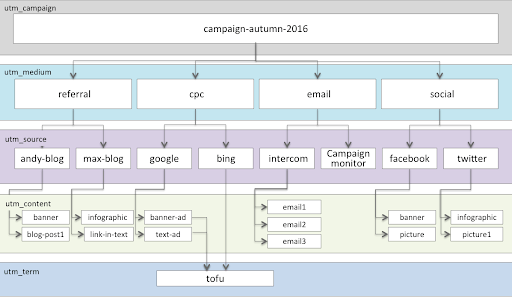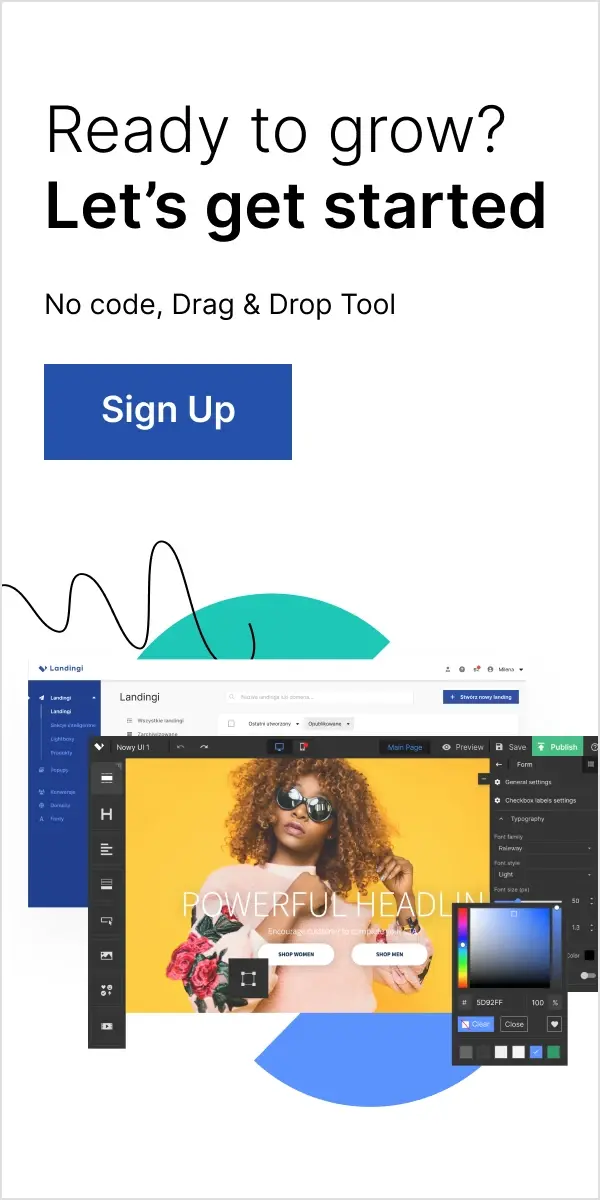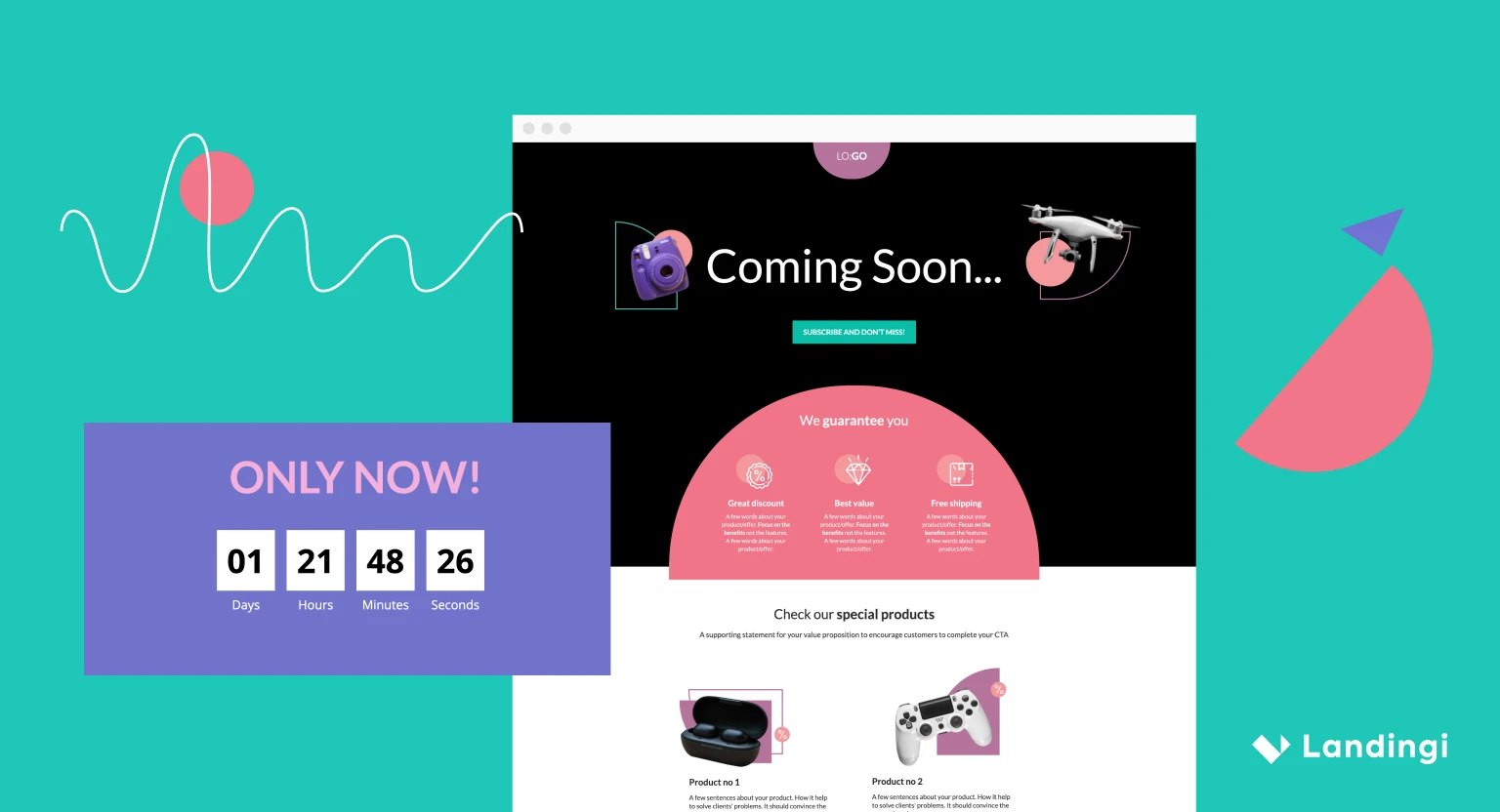Whether you are an established marketing professional, expert on SEO or a content creator looking for new ways to gain exposure, UTMs are certainly worth looking into. Urchin Tracking Modules (or UTMs for short) represent a system of keeping track of URLs and links in order to track customer engagement patterns.
According to HubSpot, over 51% of smartphone users have discovered new companies and products to engage while using search engines such as Google. However, only 22% of businesses are satisfied with their overall conversion rates, with 61% of them stating that SEO optimization and growth of organic presence are their top priorities. This shows a disparity between content created for marketing purposes, landing page design and the tracking and analysis of content in hopes of attracting a larger audience – it takes more than beautiful landing page templates to attract new visitors.
This is where UTMs come into play as a universal way of knowing where your customer came from; through which link and with what intent they did it. Before we get ahead of ourselves however, let’s take a look at what makes UTMs so important and how you can make the most of them through several simple yet effective implementation methods.
Make your sections smartable and let go of mundane manual tasks with Smart Sections! An easy way to manage bulk changes.
The Basics of UTM
To implement UTMs in the right way, let’s take a look at what is UTM and what the term stands for in marketing practice. Urchin Tracking Modules are seen as URL extensions in the marketing industry. They can help you understand what external sources the visitors and customers are coming from.
UTMs come in different types, each of them with a focus on a different aspect of customer attraction. This tracking system is typically implemented through Google Analytics since the service is tied closely together with global SEO and search engine ranking across different search engines. Creating UTM codes in Google Analytics is straightforward with the right information. Google UTM can be made from scratch, by building a new URL naming structure or by retrofitting an existing one with UTM tracking parameters.
Jonah Miller, a marketing specialist at Get Good Grade, had this to say on the topic:
“Using UTMs might not be your first choice in terms of marketing content optimization if you are new to the industry. However, their parameters can help you identify the best pipelines of incoming customers which you can then use to refocus your marketing efforts going forward.”
Not using UTMs means saying “No” to additional tracking data. However, it won’t lower your odds of success in terms of customer attraction – it will only make it harder for you to understand why people are coming to your site and by which means they do it.
What are UTM Parameters?
Implementing UTM tracking into your existing URL structure is effortless if you are familiar with UTM specification. In short, UTM differentiates five tracking parameters which can be used to set up a network of terms and phrases for URL implementation. The following UTM tracking parameters can be implemented in any order, either selectively or in bulk depending on the extent of your marketing campaigns and need to track URLs:
- utm_source
This is a mandatory UTM parameter as it informs you which website sent an individual visitor to your web page. The parameter is worth paying attention to since you can reach out to websites which bring healthy traffic to your links for further collaboration and mutual benefit.
Example of implementation: utm_source=Google
- utm_medium
The second parameter is used to identify the type of link that was used in order to access your website. This can be anything from a link shared on social media to a link embedded in email marketing. It works differently than the first parameter since it identifies the type of source used to access your website.
Example of implementation: utm_medium=cpc
- utm_campaign
The third parameter can identify the specific advertisement campaign which helped attract traffic to your website. UTM tracking doesn’t require this level of depth in terms of establishing a Google UTM URL structure, but it can help you segment customer data all the same.
Example of implementation: utm_campaign=summer_sale
- utm_term
This is the point in which you can easily integrate SEO into your UTM tracking and naming convention. The fourth UTM parameter identifies specific search terms which brought the customer to your website. This data can be used to redirect your marketing campaigns going forward in order to target more viable terms and phrases.
Example of implementation: utm_term=vacuum+cleaner
- utm_content
Lastly, one of the most important parameters worth implementing in your UTM tracking system relies on content identification. This parameter can tell you which landing page elements were used to reach your website with great precision. It is worth knowing whether your site gained traffic through banner ads, popups or embedded text link.
Example of implementation: utm_content=textlink

UTM Tracking Implementation How-To
- Develop a Naming System
Now that we have a clearer understanding of how to create UTM codes in Google Analytics in terms of UTM parameters, let’s dive into practicalities. Namely, it’s important for you to use a naming system (pun intended) which can be analyzed easily without the need for additional software.
Mark O’Brian, head of marketing at CV writing service was quoted recently: “There’s nothing worse than visiting a website through Google, only to take a glance at your URL field and see a mile-long code filled with nonsensical special characters. Establishing a hand-written URL structure will allow your marketing team to keep UTM tracking under control no matter the scale of advertisement currently underway.”
Let’s take a look at the UTM optimization of Grammarly, a popular writing tool used by students and content creators alike:
Non-UTM URL: https://www.grammarly.com/
UTM URL: https://www.grammarly.com/?q=brand&utm_source=google&utm_medium=cpc&utm_campaign=brand_f1& utm_content=329885936576&utm_term=grammarly&matchtype=e&placement= &network=g&gclid=EAIaIQobChMIpt_K8I-g4QIViqoYCh0TaQSeEAAYASAAEgLi0_D_BwE
While the former lacks UTM information, the latter is harder for users to share with their social circles. This is especially true for less tech-savvy users who simply want to buy a product as simply as possible without having to struggle with URL naming conventions. Develop an easy-to-understand structure through Google Analytics and be sure to apply it across all of your website’s URLs.
Using a link shortener might be an alternative here. Modern URL shorteners allow you to keep the UTM tracking tags while making a link more user-friendly by hiding the characters. However, you need to be careful while using those tools in your campaigns. Make sure that the tool is using a 301 redirect. Otherwise, you can hurt your SEO efforts.
Besides, not everyone likes link shorteners, and there are decent reasons for this. First of all, link shorteners use redirects to get a user to a destination web page. It affects user experience and adds one more point of failure between a user and the content. Secondly, spammers really love link shorteners because they can hide their links. This leads to the situation when every shortened link looks suspicious for a common user.
- Spaces are a No-No
Spaces are generally seen as unnecessary and confusing in URL naming structures. No matter how many words or characters your company name, website categories or article titles have, make sure to avoid empty spaces in URLs. Adding spaces to UTM tracking phrases will add “%20” symbols to your URLs instead, making them illegible and difficult to analyze quickly.
Platforms such as Hemingway and Flash Essay can be used to edit your URL and UTM naming conventions to make them as simple as possible. These will make it easier to establish UTM parameters which are the most viable choices for your website. Fewer URL characters result in better UTM tracking data for further analysis.
- Avoid UTM Repetition
What are UTM parameters good for if proper URL optimization isn’t applied afterward? Avoid using the same keywords and phrases in your UTM tracking system inside a single URL. This will allow you to achieve better targeting with your end results, which will clearly showcase which singular place your traffic came from.
Adding “Twitter” to your UTM multiple times in different UTM parameters will only confuse you further without letting you know more about your customers. Apply UTM parameters and their phrases singularly throughout the URL structure to get the best results out of your tracking efforts.
- Tag External Links Only
You can clean up your UTM tracking system further by removing UTM parameters from any link present on your website. That way, people who click on internal links and jump between pages on your website won’t add to the proverbial UTM counter. This will allow for cleaner data to be extrapolated from external sources which are the primary concern of what is UTM at its core.
A managing editor at Canada-Writers, Ashley Summers spoke on the topic recently: “We make it a habit to tag very specific UTM parameters in URLs of our own company website. I believe that adding too many parameters won’t lead to better data, just more of it in terms of quantity. Selective, scheduled UTM parameter swaps can be a great idea for time-restricted ad campaigns after which you can analyze the traffic you’ve attracted in more detail.”
- Differentiate Organic from Paid Links
You should make a clear distinction between organic SEO optimized links and paid links on social media and other websites. The “utm_medium” parameter is capable of helping you differentiate your links with better clarity in this regard.
This will help you understand whether or not your organic optimization is of adequate quality and how much ROI (Return Of Investment) you get from paid ads. Putting these two together won’t lead to more traffic. It will only confuse you after the campaign is over and you’ll have no clue as to which sources the traffic came from.
- Offline Implementation Can Work
Many would argue that UTM tracking can only work on digital content. However, you can easily implement UTM into offline marketing materials and guerilla advertisement. Simply add a custom-made URL onto your poster, brochure, flyer or any other printed material to keep track of incoming traffic.
You can use one of the many URL shorteners to create a link that will be easy to type in or create a QR code that will lead users to a destination page once they’ve scanned it.
You will quickly get a hold of how many potential customers visited your website through the URL you created for the purposes of offline advertisement. In that respect, platforms such as Evernote and Online writers rating can help you create catchy, readable and easily recognizable texts for offline promotional activities. There is no reason not to take advantage of local marketing opportunities so make sure to explore what UTM can do for you in this aspect of the advertisement.
- Test before Implementation
Lastly, it’s good practice to test your Google UTM through Google Analytics before applying the UTM parameters across your URLs. This will allow you to detect potential bottlenecks early and establish what needs to be done in order to amend your UTM shortcomings.
You can conduct UTM testing in-house or invite your email list or social media followers to help you out with pinging different links filled with UTM parameters. Never apply UTM parameters without testing them, especially when it comes to your landing page and its placement on search engine result pages (SERP).

Mistakes to Avoid
As with any other marketing methodology, UTM is prone to implementation difficulties. To cap things off, let’s take a look at several mistakes you should avoid while creating your URL network :
- UTM Inconsistency
Just because your URLs have the same UTM parameters present doesn’t mean that all of them will behave in the same way. For example, if one page has a URL phrase “Instagram” while another has “instagram”, they will act independently. Be consistent throughout your UTM tracking scheme to streamline your traffic tracking and subsequent analysis.
- Overly Complex UTM Structure
Even though you may place links on social media pages, forums, e-commerce stores, and your landing page, you should always keep your URL length in check. “Avoid overly complex, convoluted URLs with a plethora of UTM pings riddled within them. While you will certainly get data back from the URLs that data will be nigh impossible to analyze because many of the parameters will cancel each other out. Opt for focused UTM tracking instead in order to make the most of what is UTM known for,” explains Anya Millington, a marketing specialist at Essaysupply.com.
- Lack of SEO keywords
Lastly, not using SEO keywords in your UTM phrases and URL structure is a major oversight. You can rely on tools such as Google Keyword Planner and SEM Rush to discover which keywords and phrases are popular in your industry. Apply these words into your URLs and UTM tracking parameters to achieve even better engagement and traffic towards your website.
In Summary
When all is said and done, UTMs will allow you to track the performance and engagement of your links across the URL network present on your website. However, UTMs will not entice customers to engage with your content any more than regular URL structures would. In other words, it won’t help you with collecting leads, but it will tell you where they came from.
Their sole purpose is to give insight into how visitor patterns work in terms of your website’s traffic. In that respect, UTM tracking is an invaluable marketing tool that will help you improve your customer engagement across the board.








